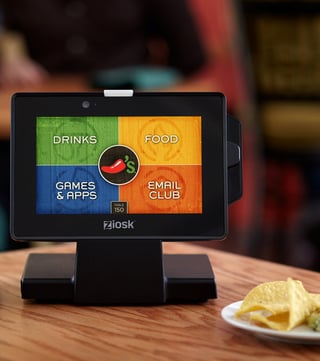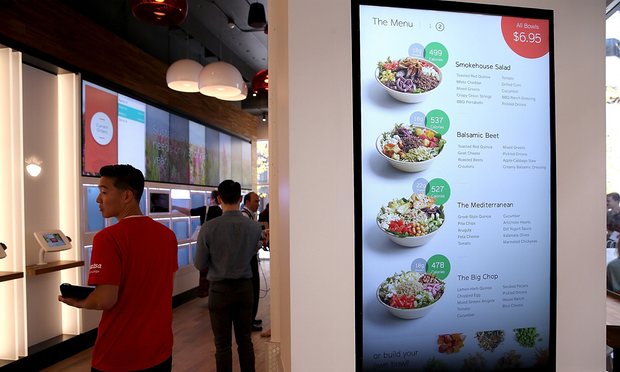Startup fast food spots like Eatsa, as well as regional and national chains such as Carl’s Jr. and Panera are integrating technology into ordering and potentially into production, providing customers a highly automated experience. Customers can expect less human interaction and more control as companies find new ways to streamline fast food.
Quinoa Through Kiosks and Cubbies
A technologically savvy breakthrough business, Eatsa invites customers to order quinoa bowls at digital kiosks, while a small, back-of-the-house restaurant staff prepares the meal. A cubby flashes the name of the customer when the order is ready, and voila! – no human interaction necessary.
Automation is “Not Rocket Science”
After visiting an Eatsa location, Carl’s Jr. CEO Andy Puzder noted that integrating automation “is not rocket science” when facing minimum wage increases. While automation could not replace all human tasks it could improve upon some, such as order taking: machines, he observed, are always polite and always remember to upsell.

Technology also reduces wait times. Fast-casual restaurants like Panera plan to implement automated ordering by the end of the year in all 1,800; the goal, according to founder and CEO Ron Shaich, “is to never have a customer wait.” This improves customers’ experience and also means they can order that third bag of chips, another drink refill, or even desert without a wait time disrupting their path to purchase. In sit-down locations like Chilli’s and Applebee’s, kiosks don’t merely offer diners the opportunity to control ordering—including viewing and paying the bill—they also offer games, customer feedback forums, and access to offers and rewards programs.
Machines Moving to the Kitchen?
Momentum Machines takes fast food technology beyond automated ordering and simple human tasks. They produce a device capable of fully preparing and packaging approximately 360 burgers per hour, and according to their cofounder, it “isn’t meant to make employees more efficient. It’s meant to completely obviate them.” Though no major industry player has taken them up on their offer, their potential to transform the kitchen has garnered much attention.
Fast food industry leaders, however, are cautious to avoid broad proclamations about fully automated kitchens.
Automating the Future
“Restaurants want to speak the language of the millennials and the language of the millennials is digital,” noted one CEO of a company that produces kiosk technology. Technology can remove much of the human interaction within restaurants, just as it has similarly done in everyday life.
It remains unclear to what extent and how quickly automation will replace human faces in the food industry. At this point, nobody doubts technology’s ability to quickly and dramatically transform a market. It is just a question of who will lead the way. 

